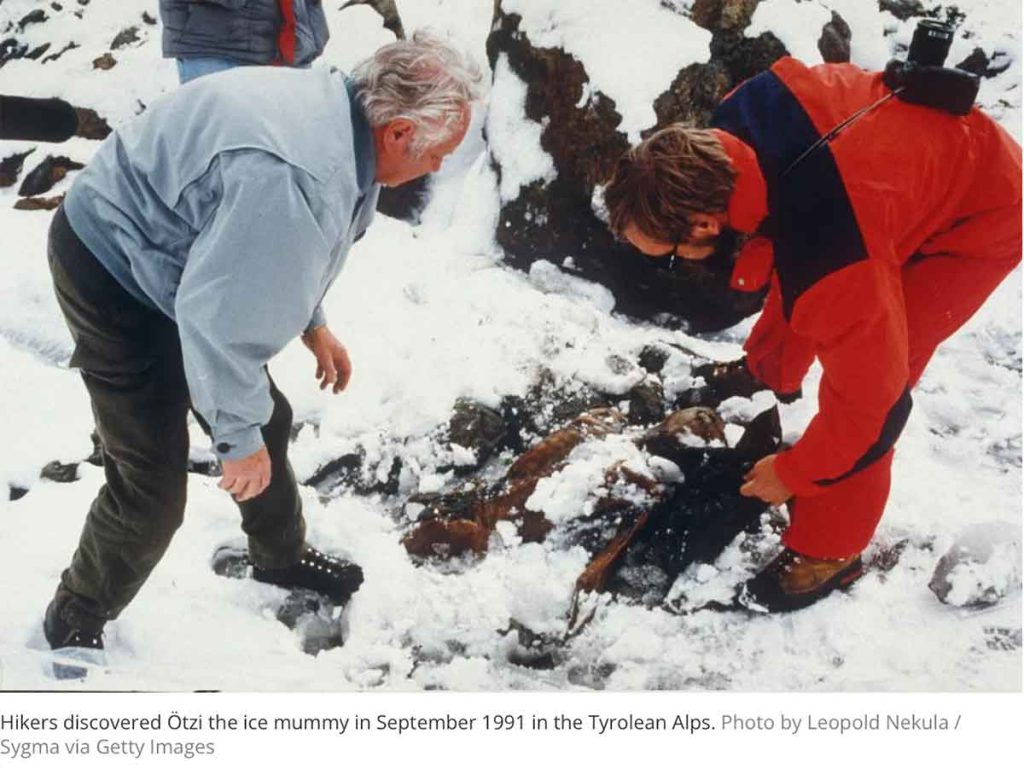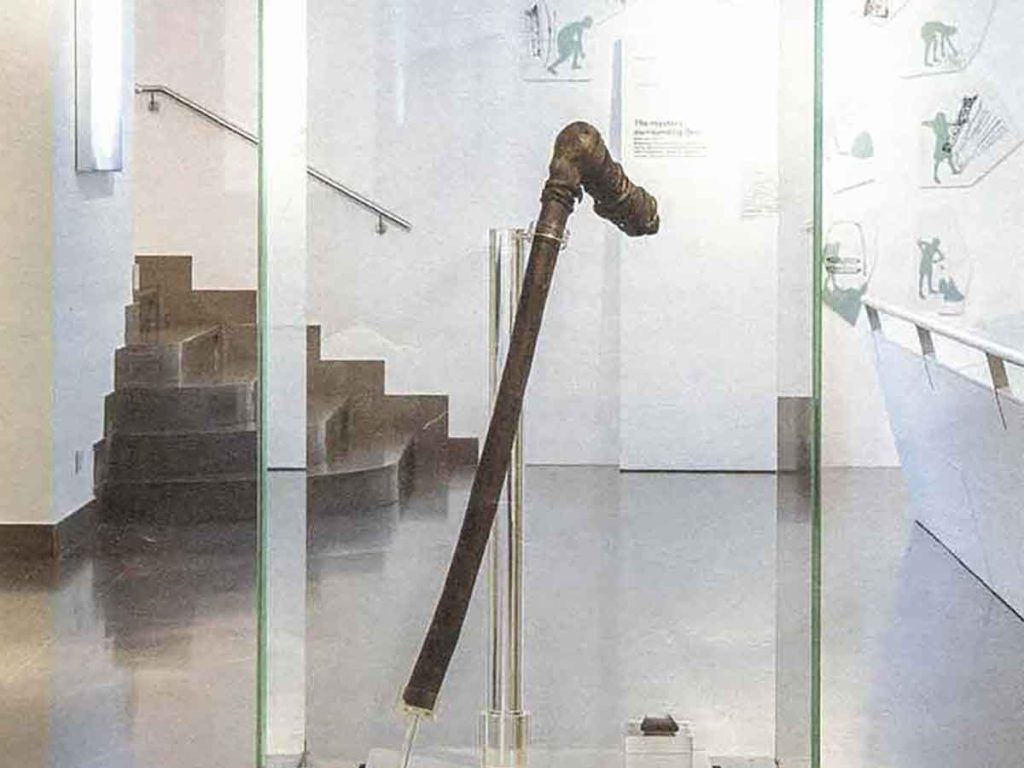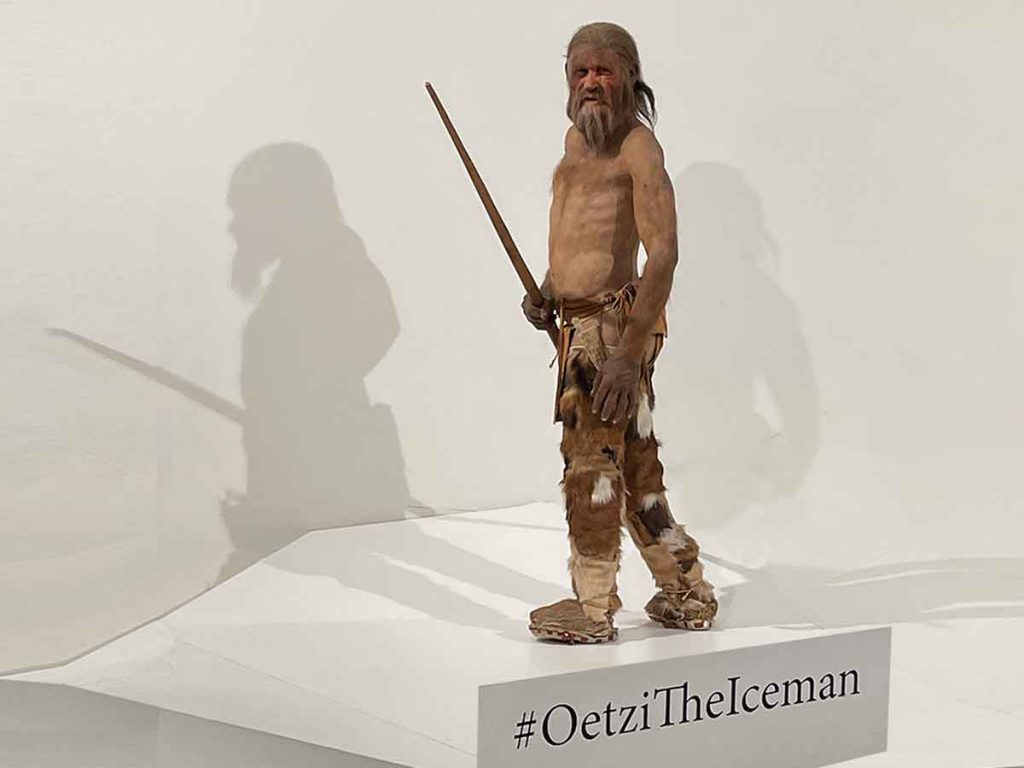In Bolzano, we had a delightful time learning about Oetzi during our visit to the South Tyrol Museum of Archaeology. In 1991, a mummified body was found by a German tourist on a glacier in the Alps. It has been carbon-dated to 3300 BCE. He was given the nickname, Oetzi (Ötzi) because he was found in the Ötztal Alps.

The scientific community has learned a great deal about him in the three decades since he was found. Oetzi was a man who lived over 5,000 years ago, 25 to 35 years of age, 5 feet 2 inches tall, and weighed about 110 pounds. He was left-handed and had brown eyes, dark brown hair, and a Mediterranean skin tone.
Equipment
For the full article about Oetzi’s extensive and practical, check out the equipment tab on his website. He had a wide-ranging knowledge about how to survive in the wilderness. He was very well equipped. One of the most important objects is Oetzi’s sublime copper axe. Secured to a yew handle with cow leather and birch tar, the blade was cast from a mold and is 99.7 percent pure copper. It was an extraordinarily wealthy item for the time, and its discovery pushed back the beginning of the European Copper Age by a thousand years.

Unsolved Murder
There can be no doubt that Ötzi was murdered. A few days before his death, he was involved in hand-to-hand combat and had received a deep cut to his right hand. A gash between the thumb and first finger of his right hand revealed that Ötzi had been stabbed a few days before he died. It was an active defensive wound, meaning he likely tried to grab the blade. The evidence therefore suggests that Ötzi was being pursued and was confronted by one or more attackers.
If you want more information, check out Jennifer Pinkowski’s story “Ötzi the Iceman: What we know 30 years after his discovery” in National Geographic.

